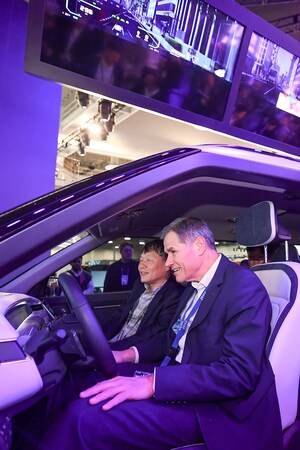Hyundai Mobis expands its technical center in Hyderabad, India to strengthen software development of future vehicles
- It will set up the second technical center in a new IT complex near the first one in Hyderabad.
- Aiming to address the continuous expansion of automobile software development and secure stability
- Expected to strengthen its position as a software-specialized center
SEOUL, South Korea, April 13, 2020 /PRNewswire/ -- As part of its global R&D networking in Korea, North America, Europe, China and India, Hyundai Mobis (KRX:012330) will expand its technical center in India, which develops and validates automotive software. Through this, the company aims to strengthen its R&D activities in India, particularly software development for autonomous vehicles.
Hyundai Mobis announced that it will set up and operate the second technical center in a new IT complex adjacent to its first technical center in Hyderabad, India. The purpose of this move is to strengthen automobile software development, which has recently been growing exponentially, and secure supply stability.
With its over 700 local talents specializing in ICT and software, Hyundai Mobis' Indian technical center develops and validates various software programs for vehicles and also collaborates with the technical center in Korea. The major items that the Indian center works on are mostly automotive electronic parts, such as IVI applications, airbag control units (ACUs), electronic braking systems (MEB5) and the AUTOSAR platform.
The first technical center will validate and develop software for mass-production products, including IVI (In-Vehicle Infotainment), chassis control systems (MDPS, ABS, electronic suspension, etc.) and airbag control units (ACUs), and develop custom products for local customers.
The new second technical center will focus on the development of control logic for autonomous driving and parking and recognition algorithms for autonomous driving sensors (camera, radar, lidar). The strategy is to improve the accuracy of autonomous driving sensor data by developing a deep learning-based image recognition algorithm and signal processing algorithm, while developing various control logic to support mass production.
To this end, the company will also develop software performance improvement tools to improve the reliability of autonomous driving software. One good example is to build databases on image recognition algorithm learning through PC-based virtual environment simulation of various driving situations. This is expected to upgrade the autonomous driving control algorithm and strengthen software development capabilities through efficient analysis of radar/lidar sensor data.
Starting from its technical center in Korea, Hyundai Mobis has been building a global R&D network in the US, Germany, China and India, with a total of over 5,000 R&D employees. Based on close cooperation, these centers are performing R&D activities to take the initiative in future automotive technologies.
The North American center focuses on the advanced development of elemental technologies for autonomous driving, including automatic lane change logic and driver status evaluation logic. The European center focuses on the development of core algorithms for autonomous driving, such as camera and radar sensors. The Chinese center plays a role as a locally specialized R&D center with global competitiveness, working on custom products for global OE customers. The Korean center, as the company's R&D headquarter, establishes technical roadmaps and strategies, and leads technical development for future vehicles in cooperation with overseas technical centers.
Hyundai Mobis also runs 'Mobis Ventures', an 'open innovation' center, in Silicon Valley, the US, and Shenzhen, China, in an effort to discover global startups.
The company's development efforts through its overseas technical centers are currently paying off. The North American center has succeeded in developing 'DDREM (Departed Driver Rescue & Exit Maneuver)', which monitors the driver status and autonomously moves the vehicle to a safe zone, and the Chinese center has presented 'the face-recognition smart key technology,' which enables the driver to enter and start the vehicle through face recognition without the smart key.
For more information contact:
Hanbyul Kim
[email protected]
SOURCE Hyundai Mobis

WANT YOUR COMPANY'S NEWS FEATURED ON PRNEWSWIRE.COM?
Newsrooms &
Influencers
Digital Media
Outlets
Journalists
Opted In





Share this article